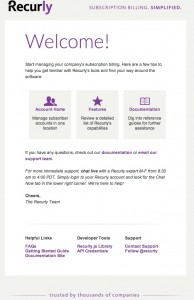We’ve heard a lot in recent years about the importance of social media, and few would disagree that it’s radically changed the face of business. Whether you’re using social networking as a group chat for business or as a kind of online chat facility to help keep in touch with customers, no business can afford to ignore it. The crucial question facing firms in all sectors – from retailers to SMS software developers – is how to make the most effective use of social media, and get the maximum bang for their buck.
Getting ahead of your rivals is particularly tough online because the competition is so intense. There are various ways you can try to glean a competitive advantage, drive traffic, and boost revenue. In order to make social media work for your business, though, you’ll need to have a thorough understanding of what you’re trying to do with it. You need to have a good idea of what social media messaging works and what doesn’t. You also must grasp how your customers are engaging with your social output (and what they make of it), and how to expand your audience.

Social media management can of course be a bit of a minefield for businesses. It’s very easy to misjudge a post or a tweet, and that can do serious damage to your online reputation. All it takes is for the wrong person to pick up on a clumsily-worded message and you could find yourself the subject of a lot of unwanted attention. Even assuming you manage to avoid such pitfalls, you still need to know how to conduct a social media audit. This isn’t quite as daunting as it sounds – and if you get it right, you could reap major rewards.
Here, we’ll list some top tips on how to complete an effective social media audit. First, though, let’s discuss in a little more detail what social media audits are and why they’re so important.
What is a social media audit, and why does it matter?
A social media audit is, on its face, pretty self-explanatory. It involves taking stock of your business’s social media presence to see how it’s performing, both as a repository of your content as as messaging apps for your audience, and whether it’s delivering the kind of results you should expect from it.
The primary point of undertaking an audit of your social channels is to ascertain what you’re doing right and what (if anything) you’re doing wrong. It’s a matter of building on the good and addressing the bad, if there is any. Audits like these are a basic but important aspect of gathering business intelligence that you wouldn’t normally encounter through internal communication tools.

If you’ve got an in-house content team (or you outsource it to a digital marketing agency), they probably do their own content audits every so often. This will involve looking at the content that’s on your site, from category and product content to blog posts, assessing its performance, and strategizing further to improve the project. They’ll also look at whether or not it’s well optimized for SEO. A social media audit works in essentially the same way, but with your social channels instead of your on-site content. Simple!
Five top tips for conducting a social media audit
So, we’ve clarified exactly what a social media audit is and briefly summarized what it involves. Now it’s time to go into the matter in a little more detail. Here, we’ll run through five top tips to conduct a social media audit that really delivers results. The kind of assessment that provides you with insights you’re looking for. Read on to find out more.
1. Take stock of all your social media accounts
Before you do anything else, you need to work out which social media accounts you’ll be auditing. Everybody knows about Twitter, Facebook, LinkedIn, and Instagram, so presumably you’re already aware that you’ll have to include these in your audit. You might, however, also have some social media channels that you’ve completely forgotten about. Perhaps you set up an old YouTube account that you intended to use, and you never really developed it but put it in as part of your newsletter template. Now’s the time to revisit these platforms. Outline the accounts that you need to include in your audit into a project scheduling software or a task management tool so each one gets ample time for assessment.
You might have forgotten the account handle and the login details for these old accounts, but you should still be able to unearth them. Search for your brand name and the social media platform in question on Google, or use the internal search facility on each site. There’s an added bonus here, too. Performing these kinds of searches might help you discover any impostor accounts, being run by people purporting to be from your company but who in reality have nothing to do with it. You should be able to get these accounts taken down by reporting them.
2. Make sure your branding and tone are consistent
Another easy win is to check whether your branding and tone are consistent across all channels. It simply looks more professional when you establish a coherent presence on Twitter, Facebook, Instagram, and so on. Of course, each platform has distinct audiences, and brands use them to communicate different things. Facebook, for instance, tends to have more detailed messaging than Twitter and Instagram. LinkedIn, meanwhile, is targeted at a more professional audience. It’s good, nonetheless, to maintain a degree of uniformity of both branding and tone because it impacts the overall experience of your audience.
If you’ve changed your company branding recently, or you’ve subtly changed your brand’s tone on social, it may be that not all of your social channels reflect that change as yet. The channels that get more attention and usage might be more up to date than their neglected counterparts. This is an easy adjustment to make, so when you’re auditing your social media accounts, be sure to address any such inconsistencies.
3. Assess performance by channel and by content
Carrying out a successful social media audit requires you to assess on which channels your brand is performing best. You also need to find which types of content are generating the most engagement. The first task, in particular, is relatively straightforward, and it’s an easy way to put some numbers on the board. You can look, for example, at your follower count and also determine how much that has grown over a given period. This will help you work out where to concentrate your attention; it may be that you want to continue focusing on where you’re doing well, or you may wish to build up a following on other platforms.
Furthermore, you should look at your best-performing social content over at least the last year. This should give you a better idea of what your target audience is looking for from brands’ social engagement. Look at the metrics: what sort of content is getting the most shares? How many responses are your posts getting, and are those responses positive or negative? A sentiment analysis tool can help here. Use social media listening techniques to keep tabs on social media mentions of your brand and competitors.
4. Understand your audiences
Crucial to completing an effective social media audit, is an in-depth understanding of who it is you’re trying to reach. It’s essential to figure out your target audience. As we’ve already alluded to, each social media platform has its own distinct audience and it’s important to tailor your content accordingly. Twitter, for instance, is a more fast-paced platform where you have a particularly limited window to make an impression on users. Informative, lengthy, and authoritative content tends to perform better on LinkedIn, which is used more often than not by white-collar professionals.
Get to know the various demographics at play on each platform. Where are you most likely to find the kind of consumers who’d be receptive to your brand and what it has to offer? If you’re targeting a younger audience then you might find them on Snapchat or TikTok. If you’ve got your eyes on an older customer base, then Facebook could be the right place to concentrate your efforts. And as we’ve noted, LinkedIn is used by people who are, on the whole, reasonably affluent professionals. Look for those social platforms whose demographics most closely match that of your existing consumer base, or the one you’re looking to target.
5. Keep company goals in mind
Another important point to bear in mind when auditing your social media accounts is that you shouldn’t treat them in isolation. Your social media presence needs to complement your wider company goals, so these must be taken into consideration as well. How far are your social media accounts helping you in meeting your broader objectives? How closely aligned is your social content with your company objectives? This might seem like an obvious point to make, but you’d be amazed how many firms simply fail to consider it.
As whole teams are most apt for ensuring this alignment, it’s best to assess the audit within a meeting. Utilizing a mobile screen sharing tool to present specific social media output will help groups focus on how people are perceiving your content and brand presence through a phone screen. In this case, a conference app free for your organization to use with the necessary casting features would be appropriate.
By keeping social media aligned with overall company objectives, it becomes much easier to monitor key performance indicators (KPIs) and return on investment. The thing to remember here is that social media can be a wonderful and hugely effective marketing tool. It’s crucial, though, to have a strategy that helps to maximize your brand’s presence on social media and also incorporates your wider aims and objectives. Boosting followers and earning shares is a means to an end – it’s not an end in itself.
Digital & Social Articles on Business 2 Community
(52)











